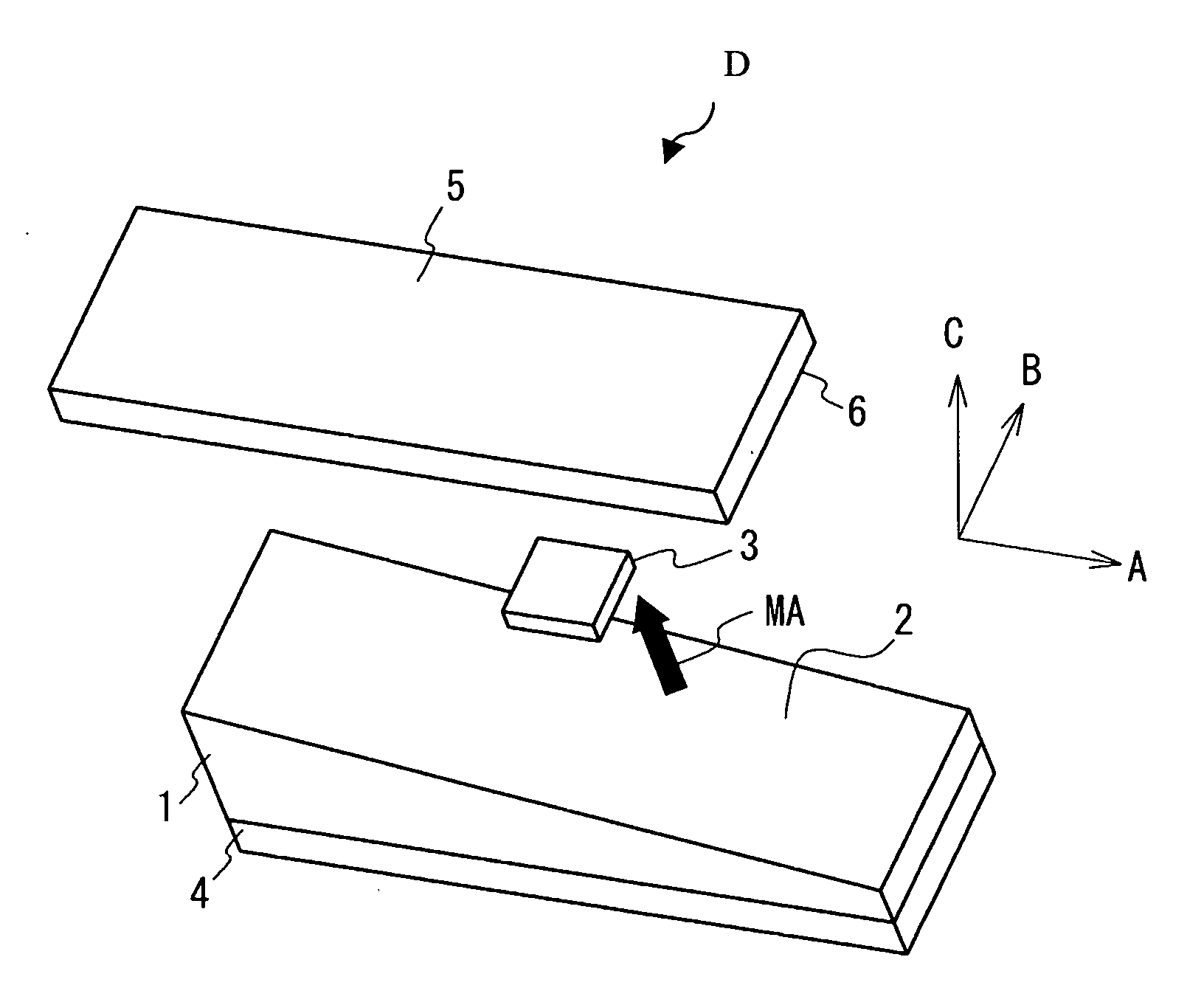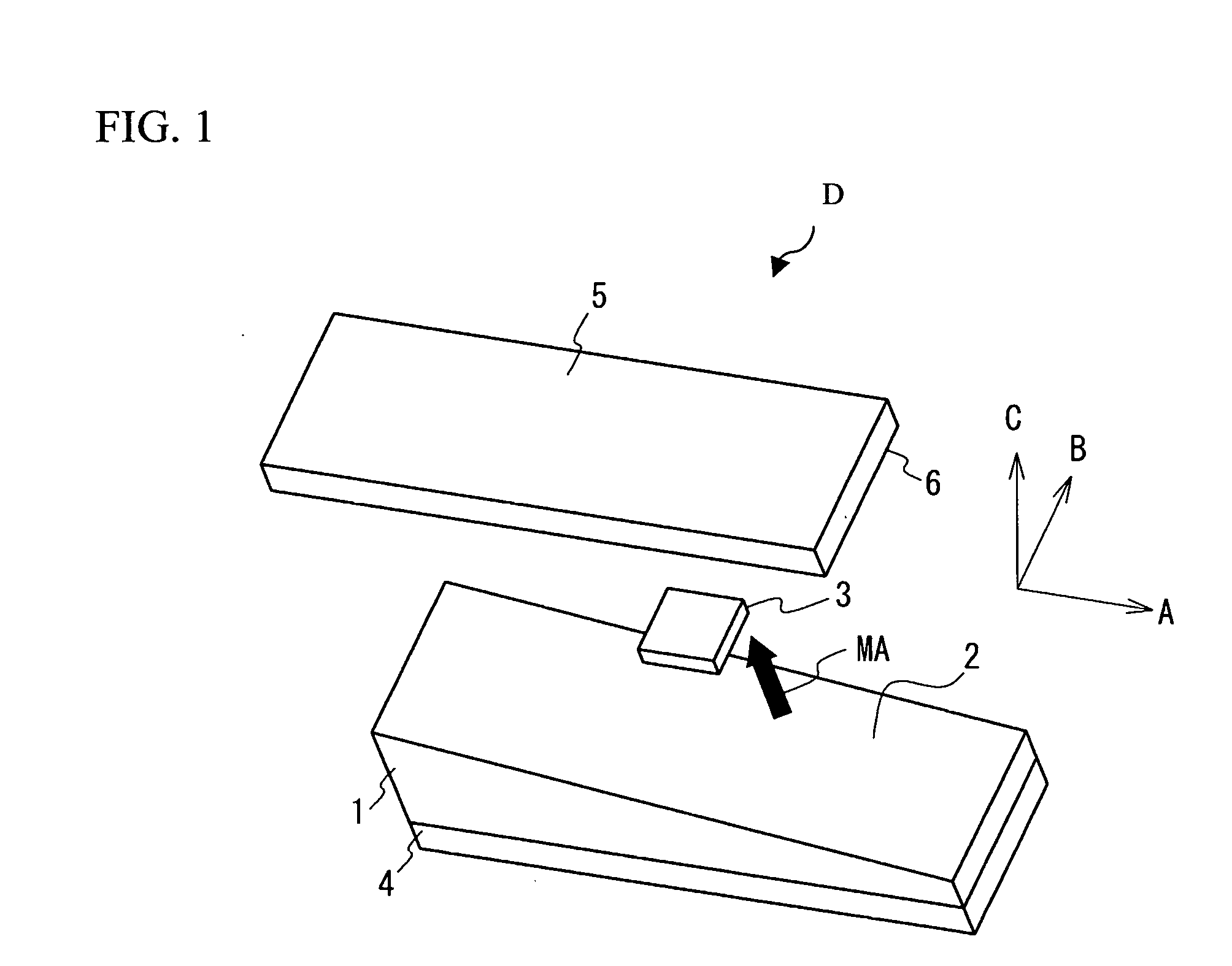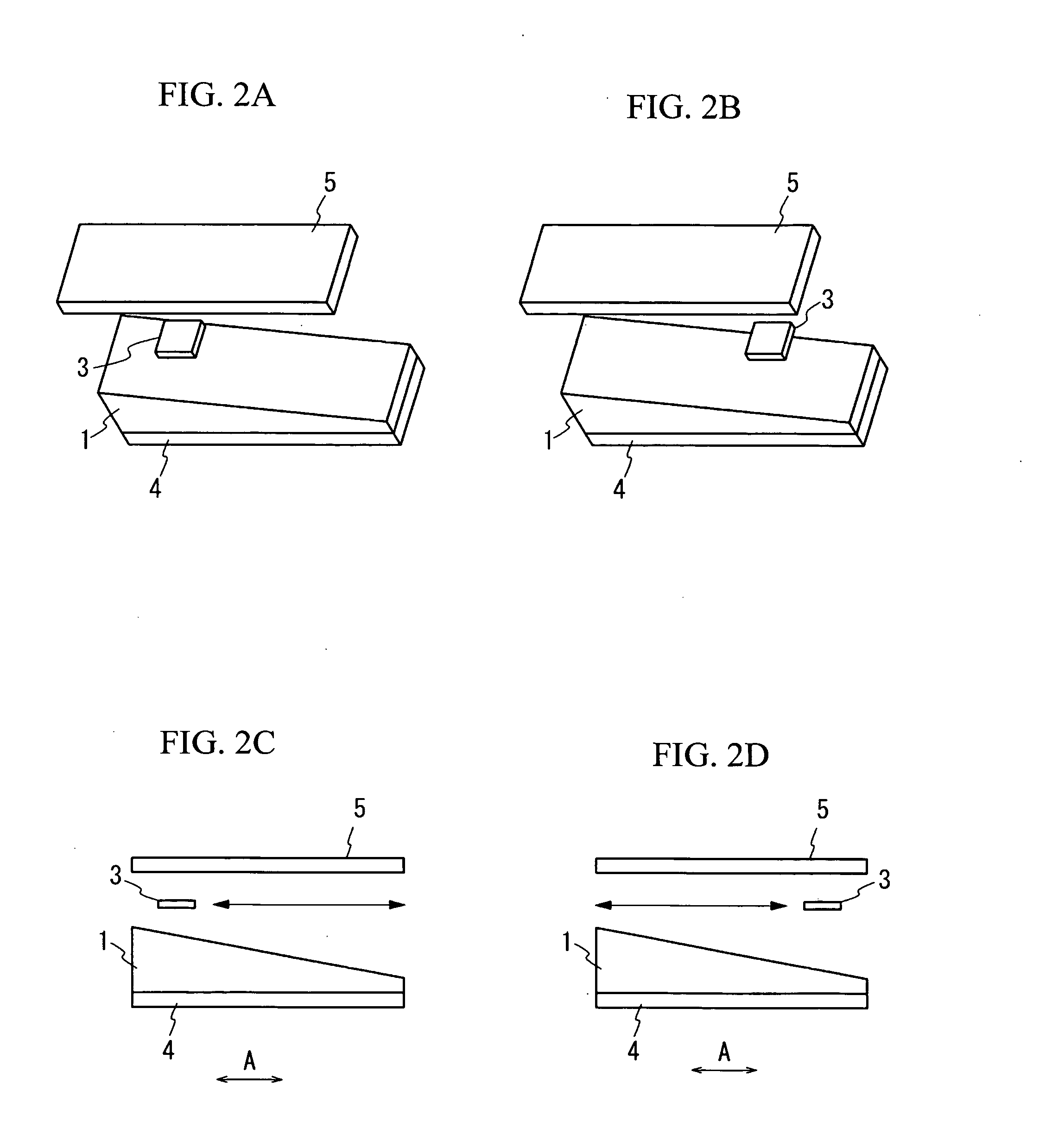Position detection device, pointing device and input device
a technology of position detection and input device, which is applied in the direction of instruments, computing, electric digital data processing, etc., can solve the problems of increased production costs, increased production costs, and increased size of input device,
- Summary
- Abstract
- Description
- Claims
- Application Information
AI Technical Summary
Benefits of technology
Problems solved by technology
Method used
Image
Examples
first embodiment
[0059]FIG. 1 illustrates an enlarged view of a sensor portion D, which is a principle portion of a position detection device. The sensor portion D has at least a magnet 1 serving as a magnetic field generator and an electromagnetic conversion element 3. The electromagnetic conversion element is arranged on a given plane. As is shown in FIG. 1, if three axes A, B and C are provided to be virtually crossed at right angles to each other, the electromagnetic conversion element 3 is arranged, for example, on an A-B plane at a given level in a C-axis direction. The magnet 1 is arranged to face one side of the electromagnetic conversion element 3 in a direction vertical to the A-B plane. A face 2 (hereinafter referred to an opposed face 2) at one side of the magnet 1 facing the electromagnetic conversion element 3 is a plane tilting linearly. Specifically, the magnet 1 has a rectangular shape, when it is projected on the A-B plane, and the magnet 1 is arranged in such a manner that a longe...
second embodiment
[0073] In the sensor portion D of the position detection device in accordance with a second embodiment of the present invention, the opposed face 2 of the magnet 1 facing the electromagnetic conversion element 3 has another shape. FIG. 6A through 6D illustrate the sensor portion D of the position detection device in accordance with the second embodiment. FIG. 6A through FIG. 6D show illustrative variations of the opposed face 2 of the magnet 1. Although the opposed face 2 of the magnet 1 in accordance with the first embodiment has a plate shape tilting linearly in a direction of the relative displacement of the magnet 1 and the electromagnetic conversion element 3, the opposed face in accordance with the second embodiment has a curved surface. A magnetic field disturbance might exist at the position where the electromagnetic conversion element 3 is arranged. As is shown in FIG. 6, it is possible to correct the output of the electromagnetic conversion element 3 to be linearized by cu...
third embodiment
[0077] In the first embodiment and the second embodiment mentioned above, the opposed face 2 tilts based on the changing thickness of the magnet 1. In the sensor portion D of the position detection device in accordance with a third embodiment, the opposed face 2 is made to tilt by changing the thickness of the first yoke 4 provided under the magnet 1. FIG. 7A through FIG. 7E illustrate the sensor portion D included in the position detection device in accordance with the third embodiment. FIG. 7A through FIG. 7E show illustrative variations in which the opposed face 2 tilts based on the changing thickness of the yoke 4, and then the shape of the opposed face 2 is changed.
[0078] The structure example shown in FIG. 7A corresponds to the structure in accordance with the first embodiment. The thickness of the first yoke 4 changes in parallel with the relative displacement direction MU of the magnet 1 and the electromagnetic conversion element 3. Accordingly, the opposed face 2 having a ...
PUM
 Login to View More
Login to View More Abstract
Description
Claims
Application Information
 Login to View More
Login to View More - R&D
- Intellectual Property
- Life Sciences
- Materials
- Tech Scout
- Unparalleled Data Quality
- Higher Quality Content
- 60% Fewer Hallucinations
Browse by: Latest US Patents, China's latest patents, Technical Efficacy Thesaurus, Application Domain, Technology Topic, Popular Technical Reports.
© 2025 PatSnap. All rights reserved.Legal|Privacy policy|Modern Slavery Act Transparency Statement|Sitemap|About US| Contact US: help@patsnap.com



